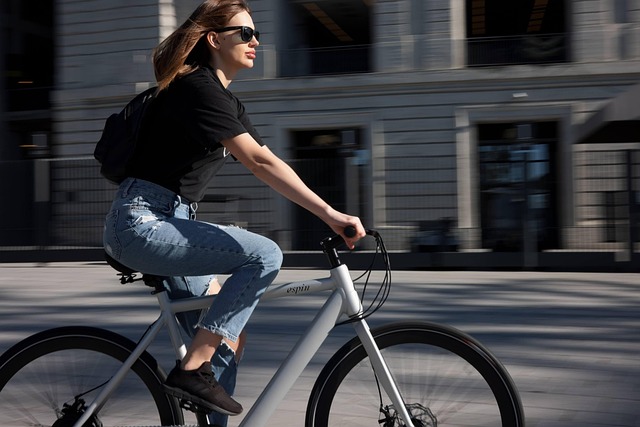Bike commuting is an empowering way to integrate exercise into your day, reduce your environmental impact, and avoid the costs and headaches of traffic and public transit. But if you’re new to it, switching to two wheels can seem intimidating. Where do you start? What gear do you need? How do you stay safe in traffic?
This guide covers everything you need to start bike commuting with confidence, including essential gear like the right commuter bike, safety strategies, and tips for planning the perfect route.
Why Commute by Bike?
Before diving into the how-to, let’s talk about why so many people are trading in four wheels for two:
- Health benefits: Regular cycling improves cardiovascular health, builds strength, and reduces stress.
- Eco-friendly: Biking produces zero emissions and reduces your carbon footprint.
- Cost-effective: Save money on gas, parking, and transit passes.
- Time-efficient: In many cities, biking can be faster than driving or taking public transportation during rush hour.
- Mental well-being: Starting and ending your day with fresh air and physical activity can improve your mood and productivity.
Essential Bike Commuting Gear
You don’t need to spend thousands of dollars to get started, but investing in the right gear can make your ride smoother and safer.
1. A Reliable Commuter Bike
At the heart of your setup is a quality commuter bicycle—one designed for everyday riding, comfort, and durability.
Choose a commuter bike suited for your terrain and distance:
- Hybrid bikes are perfect for city commuting—they blend speed, comfort, and utility.
- Road bikes are faster but may be less comfortable on rougher routes.
- Electric commuter bikes (e-bikes) are excellent for longer commutes or if you want to avoid arriving sweaty.
- Folding bikes are ideal if you combine biking with public transit or need to store your bike indoors.
Look for commuter-friendly features like:
- Mounting points for racks and fenders
- Upright riding position
- Sturdy frames and puncture-resistant tires
2. Helmet
A good-quality, properly fitting helmet is a must. Look for models with MIPS (Multi-directional Impact Protection System) for added safety.
3. Lights & Reflectors
- Front white light and rear red light are legally required in many areas.
- Reflective clothing and bike reflectors enhance visibility, especially during early mornings or after sunset.
4. Bike Lock
Secure your commuter bike with a strong U-lock or heavy-duty chain. Consider a secondary lock for the wheels or seat.
5. Commuting Clothes
- Wear comfortable, breathable clothes.
- Padded bike shorts help for longer rides.
- Waterproof jackets and pants are lifesavers in wet weather.
- Bring a change of clothes for work or invest in moisture-wicking, professional-looking commuter apparel.
6. Bag or Rack
- Backpacks are fine for short rides but can get sweaty.
- Panniers or rear racks are more ergonomic and ideal for commuter bicycle setups.
7. Flat Kit
Carry a mini-pump, spare tube, tire levers, and a multi-tool. You don’t need to be a mechanic – just learn basic repairs or bring your bike to a local shop if needed.
Safety Tips for New Bike Commuters
Riding in traffic can feel daunting at first, but these safety principles help protect you on the road:
1. Follow the Rules of the Road
- Ride with traffic, not against it.
- Obey stop signs and traffic lights.
- Signal turns with your hands.
- Yield to pedestrians and be courteous.
2. Be Predictable
Don’t weave between cars or dart in and out of bike lanes. Ride in a straight line and signal your intentions.
3. Stay Visible
Wear bright or reflective clothing, especially at dawn or dusk. Avoid a black outfit with no reflectors. Lights should be used even in daylight if it’s overcast.
4. Watch for Car Doors
Ride far enough from parked cars to avoid the “door zone,” where someone might unexpectedly open their door into your path.
5. Stay Alert
Don’t ride with headphones. Keep your eyes and ears open for road hazards, drivers, and pedestrians.
Planning Your Route
The route you’d take by car isn’t always the best for biking. Use tools like Google Maps (bike mode), Komoot, or local bike maps to find cyclist-friendly roads.
Tips for Choosing a Route:
- Look for bike lanes or multi-use trails.
- Avoid major roads with heavy traffic or limited shoulder space.
- Try a test run on a weekend to time your ride and scout conditions.
- Consider combining your commute with transit if your workplace is far.
Using a commuter bike with comfortable geometry and storage options can help make longer or more complex routes easier to manage.
Bonus: Add Buffer Time
Always build in an extra 10–15 minutes when starting out. You’ll feel less stressed and more in control if you encounter construction, flat tires, or unexpected detours.
Weather Considerations
Don’t let the weather scare you off – just be prepared.
- Rain: Waterproof gear, fenders (often standard on a commuter bike), and water-resistant panniers help keep you and your belongings dry.
- Cold: Dress in layers. Gloves, headwarmers under your helmet, and insulated jackets help fight the chill.
- Heat: Stay hydrated and wear sweat-wicking, breathable clothing.
Tips to Stay Comfortable & Consistent
- Pack the night before to avoid morning delays.
- Shower at work if available, or use body wipes and deodorant if not.
- Start 1–2 days a week, then build up as you get more comfortable.
- Log your miles with apps like Strava or Ride with GPS – it’s motivating!
- Join a bike commuter group or find a buddy for accountability and tips.
Final Thoughts
Starting to bike commute can feel like a big lifestyle shift, but with a little preparation and the right mindset, it becomes second nature. Investing in a solid commuter bike and practicing good safety habits pays off quickly. You’ll likely arrive at work feeling more energized and less stressed than ever before – and with the satisfaction of having already fit in some exercise and done something good for the planet.
So pump up your tires, strap on your helmet, and enjoy the ride. The road is calling.







Recent Comments